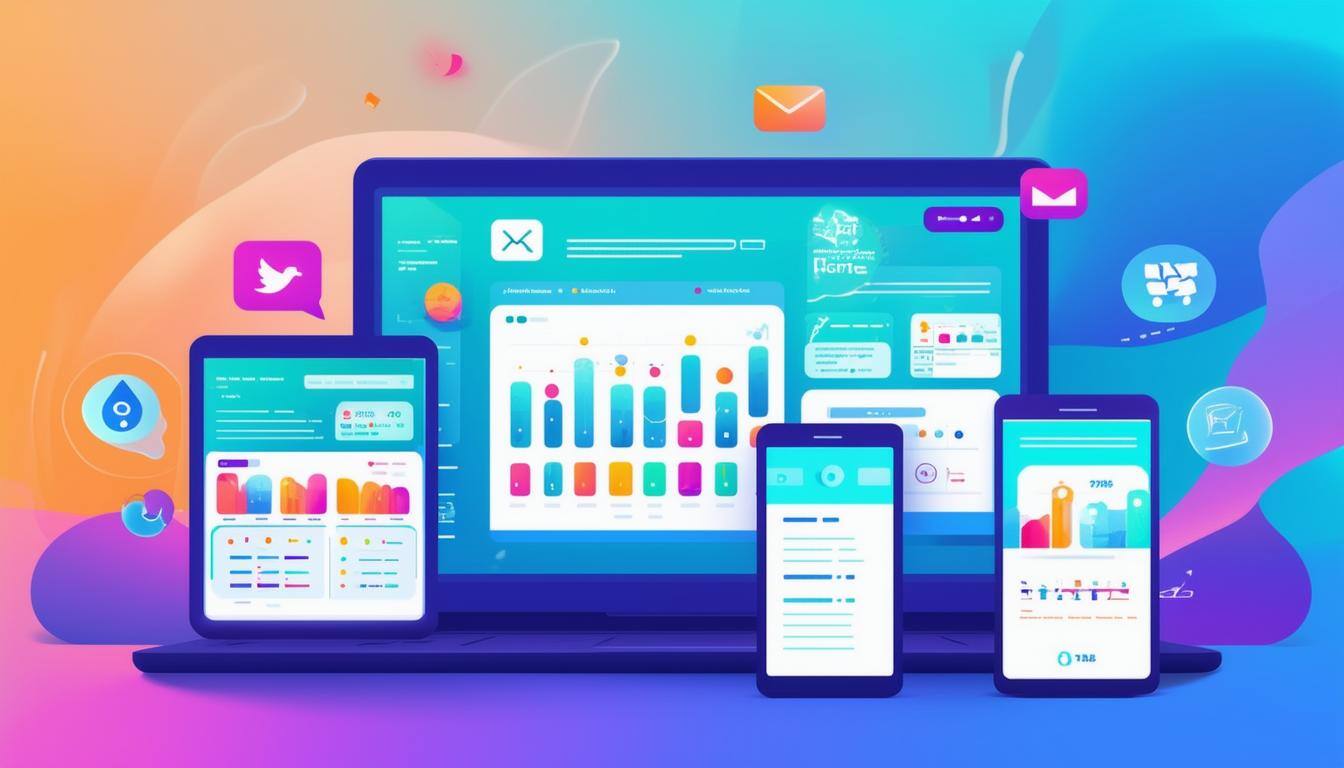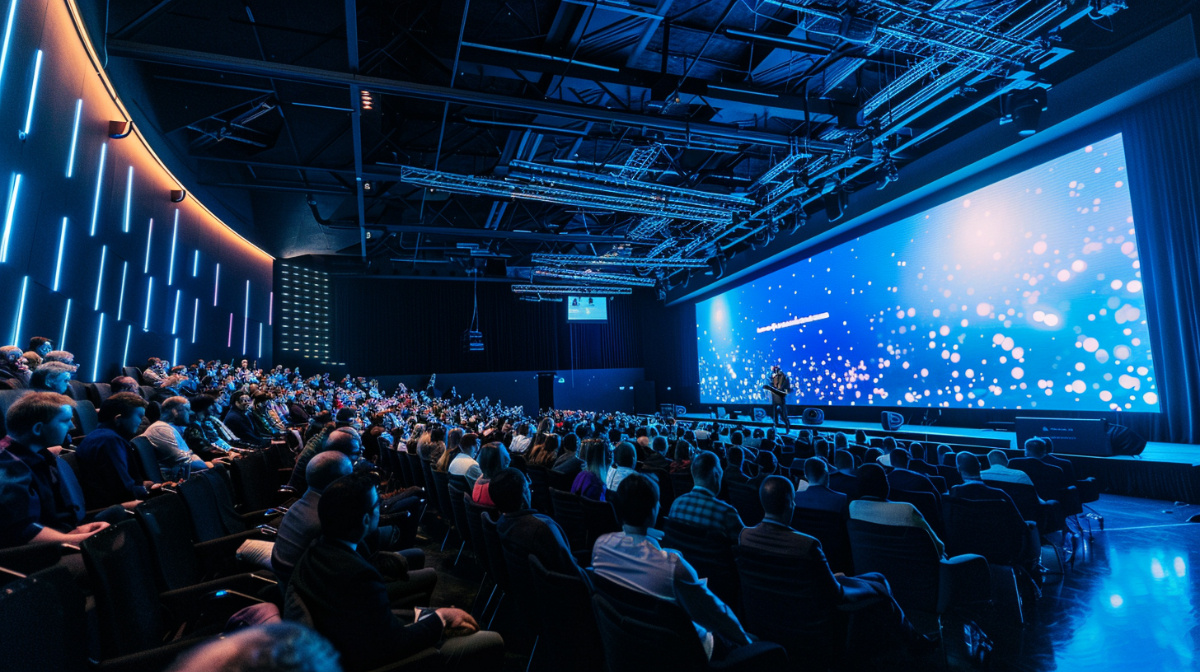Event Marketing Platforms to Simplify Your Event Strategy

The evolution of event promotion platforms reflects broader changes in how people discover and engage with events. Traditional event marketing relied heavily on broadcast approaches - sending out messages widely and hoping to reach interested attendees. Modern platforms instead enable precision targeting, detailed analytics, and continuous engagement throughout the event lifecycle.
These event marketing platforms serve as the technological foundation for successful event promotion. They're not just tools for selling tickets or sending emails - they're comprehensive systems for understanding and connecting with potential attendees. This shift fundamentally changes how organizers approach event promotion.
Core Platform Categories and Their Applications
1. Ticketing-Focused Platforms
Platforms like Eventbrite and Ticket Tailor specialize in handling the transactional aspects of events. Their primary strength lies in managing ticket sales, but their role extends far beyond simple payment processing. These platforms excel at reducing purchase friction - the small obstacles that might prevent someone from completing their registration.
Registration abandonment often occurs due to complicated checkout processes or unclear pricing. Ticketing platforms address this through optimized purchase flows, mobile-friendly interfaces, and transparent fee structures. They also help maintain momentum through automated confirmation emails and calendar integration.
However, ticketing platforms' promotional capabilities often have limitations. Their email tools typically focus on transactional messages rather than sophisticated marketing campaigns. Social sharing features, while present, usually offer basic functionality rather than advanced targeting or analytics. Understanding these limitations helps organizations plan supplementary promotional tools effectively.
2. Marketing-Centric Platforms
Marketing platforms like Mailchimp and Campaign Monitor approach event promotion from a different angle. They excel at nurturing relationships with potential attendees through sophisticated communication tools. These platforms shine when organizations need to build anticipation over time or promote multiple events to the same audience.
The real power of marketing platforms lies in their ability to segment audiences and personalize communications. They can track how potential attendees interact with promotional content, automatically adjusting message timing and content based on these interactions. This capability becomes particularly valuable for events with longer promotion cycles or tiered pricing structures.
Marketing platforms also typically offer stronger integration with social media and advertising platforms. This allows organizers to coordinate messaging across channels, ensuring consistent positioning while adapting content formats for different platforms. However, these platforms often require separate ticketing solutions, adding complexity to the promotional toolkit.
3. Full-Suite Solutions
Comprehensive platforms like HubSpot and Salesforce aim to handle all aspects of event promotion within a single system. They combine ticketing capabilities, marketing tools, and customer relationship management features. This integration can significantly streamline promotional workflows, particularly for organizations running multiple events or incorporating events into broader marketing strategies.
The main advantage of full-suite solutions lies in their data handling. When all promotional activities occur within one system, organizations gain deeper insight into the complete attendee journey. This helps identify which promotional tactics most effectively drive registrations and engagement.
However, full-suite platforms require significant investment in both budget and team training. Their complexity can overwhelm smaller organizations or those new to digital event promotion. Organizations must carefully weigh the benefits of comprehensive integration against implementation challenges.
Bridging Platform Features to Real Attendee Relationships
Event marketing platforms often get reduced to checklists of features—ticketing, email automation, analytics dashboards. But here’s what most guides miss: the gap between what a platform can do and how attendees actually experience your event. Let me explain with a story.
Last year, a client insisted on using a "comprehensive" platform for a 500-person industry summit. They had every bell and whistle: dynamic pricing, AI-driven email sequences, predictive analytics. Yet registrations plateaued. Why? The emails felt robotic, the registration page sterile, and the follow-ups generic. The platform was technically flawless, but it forgot one thing: events are about people, not workflows.
This isn’t about ditching technology. It’s about using platforms to foster human connection at scale. Let’s break this down:
1. The Personalization Paradox
Most platforms tout "personalization," but few organizers use it beyond inserting a first name into an email. True personalization starts before someone registers. For example:
- Use pre-event surveys (simple Typeform links work) to ask potential attendees what sessions they care about.
- Reference those answers in follow-up comms: "We noticed you’re into UX design—our workshop with [Speaker] has 3 spots left."
A tech conference organizer I know did this manually at first (copy-pasting responses into Mailchimp), then built a Zapier automation to push survey data into their event platform. Open rates jumped 25%—not because the tool was fancy, but because attendees felt heard.
2. The Silent Power of Post-Event Gaps
Platforms obsess over pre-event marketing and registration analytics. But the real magic happens after the event. One client’s post-event survey revealed 68% of attendees wanted to stay connected with each other—not just the host. Their platform had a "community hub" feature they’d never used.
They started a private LinkedIn group (manually inviting attendees via the platform’s export list) and shared raw, unfiltered session takeaways (not the polished PDFs). Engagement lasted 6 months longer than previous events. The lesson? Platforms are repositories of relationships—if you dig into their dormant features (or even hack together basic exports).
When Your Event Platform Needs to Think on Its Feet
Event platforms often get evaluated for their planning capabilities—scheduling tools, registration workflows, promotional features. But their true test comes during the event itself, when plans collide with reality. The difference between a good platform and a critical one lies in how it handles the unexpected: last-minute changes, shifting attendee behaviors, and the urgent need to course-correct without derailing the experience.
1. Fluid Scheduling in a Rigid System
Most platforms prioritize structure over flexibility, assuming events will follow a predetermined script. But rigid scheduling tools become liabilities when sessions run late, speakers cancel, or attendees gravitate toward unplanned interactions. The best systems don’t just allow adjustments—they make them frictionless.
Look for platforms that enable instant, visible updates across all attendee touchpoints. If changing a session time requires navigating three menus and waiting for a dashboard refresh, it’s already too late. Prioritize tools that let you push updates simultaneously to mobile apps, digital agendas, and on-site displays with one action. Even better: platforms that auto-sync these changes with vendor timelines (catering, AV teams) through simple integrations, reducing the backchannel chaos of manual coordination.
2. From Data Streams to Actionable Signals
Real-time dashboards often drown organizers in metrics—registration check-ins, session attendance, app engagement. But data is useless if it doesn’t translate to action. A platform should highlight deviations from expected patterns, not just log them.
For example:
- If a workshop’s attendance drops sharply 10 minutes in, the system might flag it as a potential issue (boring content? room too cold?) and suggest sending a push notification to nearby attendees.
- If chat activity spikes in a virtual session, the platform could automatically notify moderators to join the conversation.
This isn’t about AI predictions; it’s about designing systems that recognize anomalies and surface them before they escalate. The goal is to turn raw data into a compass—not a rearview mirror.
3. The Forgotten Layer: Instant Communication Channels
When things go sideways, organizers need to communicate now—not through pre-scheduled email sequences or buried app notifications. Yet most platforms treat real-time messaging as an afterthought, forcing teams to rely on patchwork solutions (group texts, paper signs).
A robust platform should offer:
- Prioritized alerts that override silent modes on attendee devices
- Location-based messaging (e.g., notifying only those near Stage B)
- Multi-channel fallbacks (SMS if app notifications fail, venue screens if Wi-Fi drops)
These features aren’t about preventing chaos—they’re about managing it with clarity. The faster you can align attendees with changes, the less disruption they’ll perceive.
Understanding Platform Features in Detail
The landscape of event management platforms has evolved considerably, particularly in how they handle core functionalities. While the fundamentals remain consistent, the sophistication of these tools varies dramatically - something that becomes apparent only after you've worked with them extensively.
Registration and Ticketing Systems
Registration systems form the backbone of event management - they're where theoretical planning meets practical execution. The complexity here often catches organizers off guard, especially when dealing with sophisticated pricing models.
Dynamic pricing has emerged as a particularly nuanced aspect of modern registration systems. Gone are the days of simple early-bird discounts (though those certainly still have their place). Modern platforms incorporate real-time adjustments based on multiple factors simultaneously. Some systems can modify ticket prices based on current sales velocity, remaining capacity, and even competitor event pricing in the same timeframe. Worth noting - these automated adjustments need careful monitoring; we've seen cases where aggressive pricing algorithms created unexpected outcomes.
Group registration presents its own set of intricate challenges. The platforms that handle it well don't just offer basic group discounts - they provide comprehensive solutions for managing the complexities of multiple registrants under single bookings. This includes things like partial payment processing, individual attendee information collection, and separate communication streams for group leaders versus members.
The waitlist functionality in modern platforms deserves particular attention. Beyond simple queue management, advanced systems actively engage with waitlisted attendees, providing real-time updates on their position and likelihood of securing a spot. The more sophisticated platforms can automatically release and reallocate tickets based on complex rule sets, factoring in things like priority status, registration timing, and even historical attendance patterns.
Email Marketing Capabilities
Email remains fundamental to event promotion, though its implementation varies significantly across platforms. The distinction between basic and advanced systems becomes particularly evident in their segmentation capabilities.
Modern segmentation goes well beyond simple demographic splits or registration status flags. The more advanced platforms can create dynamic segments based on behavioral patterns - how attendees have interacted with previous events, their engagement with different types of content, their registration timing patterns. These segments can automatically update as new data comes in, allowing for truly responsive communication strategies.
Automation workflows in sophisticated platforms operate on multiple levels simultaneously. They're not just sending scheduled emails - they're adjusting content, timing, and delivery patterns based on recipient behavior. The complexity here can be overwhelming; it's essential to build these workflows gradually rather than attempting to implement everything at once.
Deliverability management often gets overlooked in platform evaluation, but it significantly impacts promotional effectiveness. Advanced platforms provide detailed analytics on delivery rates, bounce patterns, and engagement metrics. They'll often include tools for testing email content against common spam triggers and offer suggestions for improving inbox placement.
Analytics and Reporting
The depth of analytics varies dramatically across platforms, particularly in how they handle attribution tracking and engagement metrics. The more sophisticated systems can track the complete journey from initial awareness to registration, including multiple touchpoints across different channels.
Traditional engagement metrics like email open rates and click-throughs only tell part of the story. Modern platforms track multi-channel engagement patterns, including social media interactions, website behavior, and content consumption. This broader view provides much richer insights into how potential attendees interact with promotional content.
Predictive analytics capabilities have begun appearing in more advanced platforms, though their effectiveness varies significantly based on the quality and quantity of historical data available. These tools attempt to forecast registration patterns and suggest optimal timing for promotional activities. However, they require substantial historical data to generate meaningful predictions.
Implementation Strategies and Considerations
Technical requirements often become more complex than initially anticipated. API limitations, in particular, can create unexpected bottlenecks - especially when dealing with real-time data synchronization between multiple systems. Integration capabilities might look comprehensive on paper but require significant customization in practice.
Scalability considerations extend beyond simple attendee numbers. Organizations need to evaluate how platforms handle increased data volumes, concurrent users, and integration complexity. The pricing implications of scaling up can be surprising - some platforms that appear cost-effective at lower volumes become prohibitively expensive at scale.
Data Management Across Platforms
Contact data synchronization presents ongoing challenges, particularly when dealing with multiple systems that each consider themselves the "source of truth." Maintaining consistency across platforms requires careful attention to data flow patterns and conflict resolution rules.
Engagement data integration often reveals inconsistencies in how different platforms measure and report similar metrics. Creating a unified view of engagement requires careful normalization of data from various sources. Some organizations develop custom reporting solutions to address these inconsistencies.
Resource Allocation
Implementing a comprehensive platform for your events can be a game-changer, but it's important to understand that the resource requirements may surpass initial estimates. Team training is crucial and ongoing as platforms evolve with new features and capabilities being added regularly. As you dive deeper into utilizing these tools, you'll find that content creation demands will likely increase over time, especially as systems become more sophisticated in their targeting and personalization abilities.
Advanced Platform Usage
Implementing automation in your event management strategy requires a delicate balance between efficiency and personalization. The key to successful automated workflows lies in their ability to remain adaptable to changing circumstances while still delivering consistent experiences for attendees. As organizations expand their tech stack with new tools and capabilities, the complexity of integrating external systems also grows over time. It is crucial to maintain a seamless flow of data between platforms by regularly reviewing integration points and ensuring that all systems work together harmoniously.
Conclusion
The distinction between basic and advanced platform capabilities becomes most apparent in actual usage. While feature lists might look similar on paper, the real differences emerge in how these features work together in practice. Organizations need to balance their immediate needs against future growth potential when selecting platforms, while maintaining flexibility to adapt as requirements evolve.
The key lies not in maximizing feature usage but in identifying which capabilities truly align with organizational needs and resources. This requires ongoing evaluation and adjustment of both technical implementations and operational processes.
Related Posts
Join the movement.
Your Entourage journey starts here. Join Australia's largest community of over 500,000 business owners and entrepreneurs, and receive instant access to exclusive content and updates delivered straight to your inbox.



